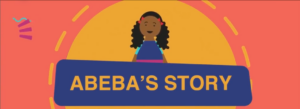When we have the correct information, we can find the best way forward to meet the rights of every child and young person. And how do we ensure we have this correct information?
It’s very easy: We listen!
Every year, Child Helpline International collects data from its child helpline members and shares it among them, so that we can all learn from what the children and young people who contact the child helplines are telling us. This information allows us to improve our services and provide decision-makers with reliable data to ensure that children’s rights policy effectively addresses the issues children are facing.
We are proud to present this report, which showcases the data on the contacts that were made by children and young people with child helplines across the EU during the year 2019. The report not only provides an insight into the issues facing children in the EU, but also offers solutions as to how we can all help to improve their lives. As well as taking a closer look at the five main reasons children and young people are making contact with child helplines in the EU, we also look at groups of vulnerable children and young people who rely on child helpline’s services and support. Finally, we also take a preliminary look at the impact that Covid-19 has had on children and young people in the early part of 2020, ahead of a special report about the coronavirus pandemic that will be published later this year.
Mental health and violence were the two main reasons for contact reported by the child helplines in the EU in 2019. More than half of all counselling contacts were related to these two topics, and the child helplines recorded more than twice as many contacts relating to mental health compared to violence. Our data also suggests that in the EU girls are more likely to contact child helplines than boys – 49.4% of the counselling contacts were made by girls, compared to 34.8% by boys.
Download a printable version of the report.




